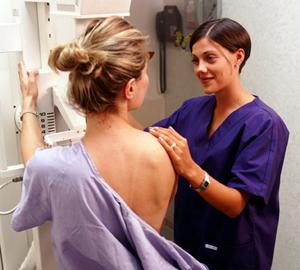 Controversy over whether screening mammography is effective at preventing breast cancer deaths has raised its head again with an Australian study claiming that adjuvant therapy is responsible for recent mortality reductions.
Controversy over whether screening mammography is effective at preventing breast cancer deaths has raised its head again with an Australian study claiming that adjuvant therapy is responsible for recent mortality reductions.
A study, published in JAMA Network Open, has used data from the Victorian Cancer Registry between 1986 and 2013 to argue that improvements in therapy rather than screening have been the driver for reductions in breast cancer mortality.
The study, led by Professor Robert Burton from Monash University’s School of Public Health and Preventive Medicine, analysed data including cancer stage at diagnosis from more than 76,000 women with invasive breast cancer.
It found crude incidence rates of all stages of breast cancer increased across the study period.
“Crude incidence of advanced stages III/IV breast cancer increased by 96% from 12.2 to 23.9 per 100 000 women from 1986 to 2013, ruling out a direct association of mammographic screening with breast cancer mortality,” the study authors said.
It also found that uptake of adjuvant treatment for early breast cancer increased significantly between 1986 and 1999.
“When analyzed using EBCTCG 2005 data for adjuvant tamoxifen therapy and EBCTCG 2012 data for adjuvant anthracycline and cyclophosphamide therapy as described previously, the 1999 adjuvant therapy uptake can account for the entire 30% decline in Victorian crude breast cancer mortality after 1994.”
“Unfortunately, often overlooked in evaluating mammographic screening is the extent to which improvements in adjuvant therapy given after surgery for EBC have reduced the potential of screening mammography to have a direct effect on breast cancer mortality.”
Professor Burton also referenced previously published work which found the harm of overdiagnosis from breast cancer screening outweighs any mortality benefit by 15 to 1.
“This analysis of cross-sectional studies showed no downstaging of breast cancer by mammographic screening, which suggests that persistence with BreastScreen Victoria may continue to expose Victorian women to unnecessary morbidity and mortality.”
“We found that adjuvant therapy accounted for the observed 30% mortality decline; given this finding, we propose that BreastScreen should be terminated,” the study concluded.
However medical oncologist Professor Dorothy Keefe, CEO of Cancer Australia, told the limbic that the bulk of the evidence suggested otherwise.
“The really important and positive thing for breast cancer patients is that breast cancer mortality has fallen so significantly over the last 30 years,” she said.
“The problem with this study is that it is a secondary analysis, it wasn’t a planned analysis, it has some methodological issues and it is very keen to ascribe all of the benefit to treatment and none of the benefit to screening when it is probably not possible to absolutely define how much is from which.”
Professor Keefe said advocating to terminate the BreastScreen program was a very strange position to hold.
“The BreastScreen program is a very loved program in Australian and women are reassured because you know it is difficult to find a lump very early and a mammogram helps do that and women are very happy with and well cared for in the program.”
“That doesn’t mean that you should never change BreastScreen. There is always room to do research, to make sure that practice is absolutely up to date and contemporary, and it may be that over the years we change the screening program if there is evidence that you could target better with women who are at high risk or low risk and that is work in progress.”
She noted that the International Agency for Research on Cancer (IARC) had reviewed all of the studies on mammography and concluded in 2015 that there was a consistent and significant reduction in mortality from breast screening.
Another recent study on breast cancer screening in South Australia suggested expanding and enhancing BreastScreen.
It concluded that achieving earlier diagnosis outside the original screening target of 50–69 years and in women from socioeconomically disadvantaged areas would further increase breast cancer survival at a population level.
“The uptake of voluntary screening from age of 40 years may improve outcomes for patients under 50 years and more targeted screening for patients with genetic risk and breast density may have positive impacts,” it said.